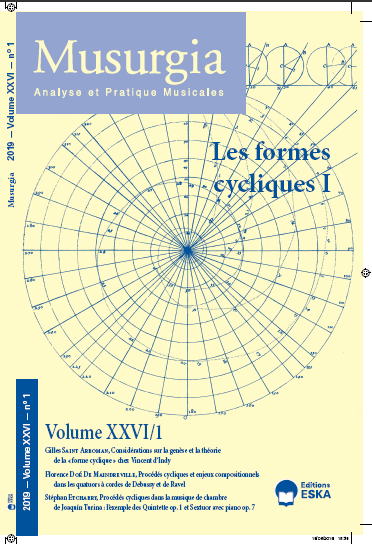Stéphan Etcharry, Cyclical Processes in Joaquín Turina’s Chamber Music: The Example of the Quintet Op. 1 and Sextet with Piano Op. 7
DOI:
https://doi.org/10.54695/mu.26.01.1909Abstract
Between 1905 and 1913, the young Sevilla-born Joaquín Turina decides to come to
Paris to complete his studies, in particular by taking composition classes with Auguste
Sérieyx and Vincent d’Indy at the Schola Cantorum. The “cyclical form” represents in
his music one of the stylistic traits directly inherited from the “scholist” pedagogy of
the early twentieth century. The chosen chamber music corpus enables us to study how
the composer’s attitude towards the treatment of the cyclical process evolves. While
the Opus 1 of 1907 blindly steps into the breach of the Schola’s thinking, applying the
ideas taught by Sérieyx and d’Indy, the Opus 7 of 1912 reflects a more thought-out
clarification of the musical language, accompanied in particular by a stronger portrayal of Andalusian colour and landscape, in an almost impressionist manner.







